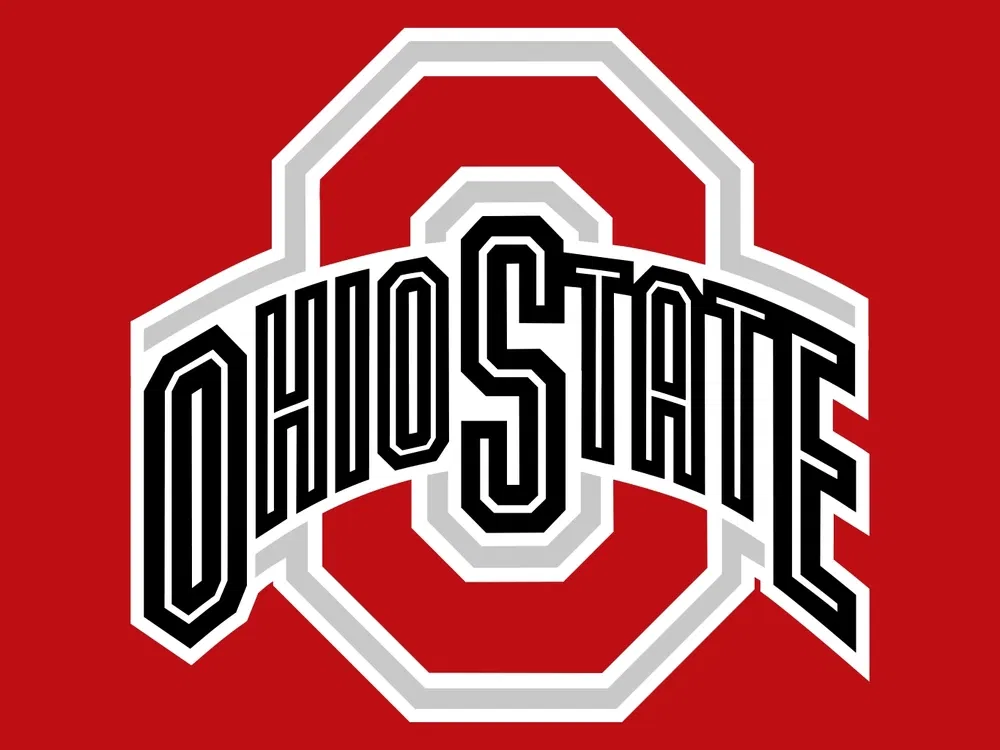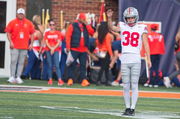
Imago
Mandatory Credits: via NCAA Athletics Wiki – Fandom

Imago
Mandatory Credits: via NCAA Athletics Wiki – Fandom
High school athletes across the United States are witnessing a new era in amateur sports, where name, image, and likeness (NIL) opportunities have redefined how young players can benefit from their athletic talent. However, in Ohio, those rights remain out of reach. This gap has led Jamier Brown, a five-star wide receiver from Wayne High School and an Ohio State University commit, to take legal action against the Ohio High School Athletic Association (OHSAA).
Watch What’s Trending Now!
Presently, there are six states where high-school students cannot sign NIL deals. These are Alabama, Hawaii, Indiana, Michigan, Mississippi, and Ohio. And it’s from Ohio itself that the recent case had sprung open. Brown, a treasured No. 1 wide receiver in the Class of 2027, seeks to overturn that policy. The case filed by his mother, Jasmine Brown, states that Brown has the earning power of more than $100,000 per year, which can be reaped through NIL, along with other significant ‘non-monetary benefits’, and Ohio’s existing policy not only limits economic freedom but also creates an uneven playing field compared to most other states.
As long as he remains committed to Ohio State and maintains his current trajectory, Brown could become the first No. 1 wide receiver prospect to sign with the Buckeyes since Jeremiah Smith, the nation’s top recruit in 2024. Athletes of this caliber should not have to face financial hardship while pursuing excellence in both academics and athletics. The financial incentives could be transformative for the student-athletes’ lives. “My family is getting by,” Brown told ESPN’s Pete Thamel. “But being able to use NIL would take some weight off my mom and me by helping cover things like tutoring, training, and travel, which help me grow as both a student and a football player.”
ADVERTISEMENT
NEWS: Jamier Brown, the country’s No. 2 prospect in Class of ’27, is the centerpiece of a lawsuit filed in Ohio seeking injunctive relief to be able to benefit from his NIL while in high school. Ohio is one of six states that prohibit high school NIL. https://t.co/RIrD28iEdd
— Pete Thamel (@PeteThamel) October 15, 2025
A product of Wayne High School (Ohio), Brown is a MaxPreps Sophomore All-American who recorded 63 receptions for 13 touchdowns over 14 games, covering 1,035 yards. He has been invited to the 2026 Navy All-American Bowl in San Antonio, Texas.
This is not the first time the OHSAA has been presented to mull over the NIL proposal. Back in 2022, it was voted down by a margin of 538 to 254 by the OHSAA members. But three years down the line, the proposal has gained momentum. “OHSAA’s blanket ban not only singles out Ohio’s high school student athletes for unequal treatment, but it also unlawfully suppresses their economic liberties, freedom of expression, and restrains competition in the NIL marketplace,” the suit says.
ADVERTISEMENT
It’s about creating fairness for the high-school students in Ohio and “giving us the chance to use our name, image, and likeness in positive ways while staying focused on school,” Brown told ESPN. “If this helps make things a little easier for the next group coming up, then it’s worth it.”
ADVERTISEMENT
A step towards creating fairness
The Ohio High School Athletic Association issued a statement that there may be a future possibility to hold a referendum vote that might allow student-athletes to receive benefits from NIL. The organisation is closely following the situation and has been preparing for an emergency vote. “We were hoping this would wait for the referendum voting period in May,” said Doug Ute, IHSAA Executive Director.“But as we told our schools this fall, the vote may have to come sooner than that due to a lawsuit, which would trigger the emergency vote.”
According to WCPO’s Mike Dyer, “The @OHSAASports plans to have an announcement today or Thursday regarding a potential emergency referendum vote related to NIL,” he wrote on X. If forty-one states and the District of Columbia have legalized NIL deals for their high school students, can we expect a change in Ohio’s high school NIL rules in the future? With the way this case appears to be headed presently, it does not appear unlikely.
Top Stories
Tiger Woods Gives Fan 1-Word Reply About PGA Tour Comeback Amid Leaked Schedule

UFC 323 Payouts: How Much Will Merab Dvalishvili, Petr Yan, Alexandre Pantoja, and Others Earn?

Ravens’ Lamar Jackson Demands Short-Term Contract Away From NFL on Thursday

Ex-Michigan Coach Takes Nasty Shot at Ohio State Kicker Jayden Fielding After Heartbreaking Loss

Injury Concerns Hit Jake Paul Training Camp as Anthony Joshua Fight Inches Closer

Chiefs Owner’s Wife Sends Public Message to President Donald Trump Amid Calls to Rename NFL

Once, the concept of amateurism defined youth athletics; however, those days are long gone.
ADVERTISEMENT
ADVERTISEMENT
ADVERTISEMENT
ADVERTISEMENT

